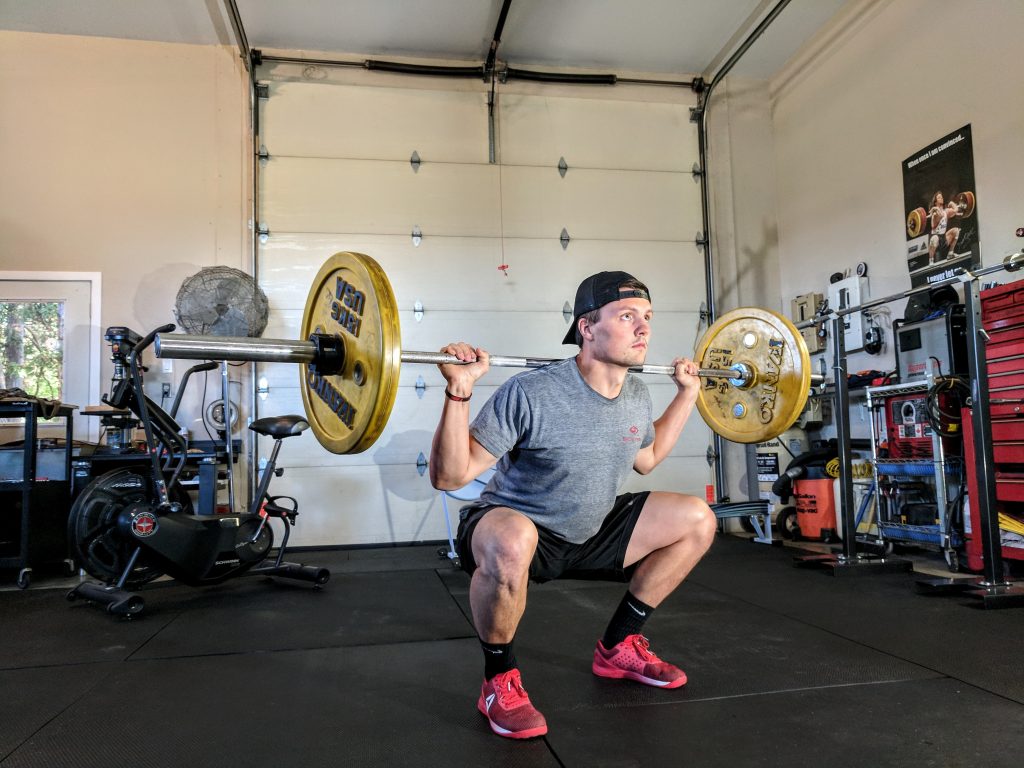Strength training is an essential component to any runners training program, from 100m sprint to ultra-marathons. Strength training reduces injury risk, improves running efficiency and increases overall performance.
Summary
- Over-use injuries reduce by up to 50% in runners who regularly strength train.
- Strength training improves running performance by 3-5%.
- Strength training does not cause weight gain when incorporated in an endurance running program.
Injury Prevention and Strength Training
For both recreational and elite runners, the biggest barrier to long and successful careers is injuries.
We hear runners talking about hip, knee, achilles and foot pain. Some think this is part and parcel of running… but this doesn’t have to be the case! Resistance training has been found to reduce sport related injuries by 66% and reduce overuse injuries by over 50% (Lauersen et. al, 2018). This is especially relevant to runners given that overuse injuries such as patello-femoral pain and achilles tendinopathy are some of the most common injuries we see in the sport.

Strength Training and Running Performance
For runners, resistance training should take priority int he base/ pre-season training phase. Runners should aim to complete 2-3 strength and conditioning sessions per week, completing 3-6 types of exercise per session. This base strength period should go for 8-12 weeks. Once you begin a race specific training program, runners can drop down to 1 x strength training session per week to maintain there current strength status.
A study by Balsalobre-Fernández et al. (2016) found that running programs including strength and plyometric training improve running economy and performance by 3-5%. The studies they reviewed included strength based workouts with 2-4 heavy resistance exercises (e.g weighted single leg press, calf raise, squat etc.) as well as plyometric training and short sprint sessions.
4 Muscle Groups To Target
| Muscle Group | Exercises |
| Calves | – Seated Calf Raise – Single Leg Standing Calf Raise |
| Quadriceps | – Single Leg Skater Squats – Reverse Nordics – Sissy Squats |
| Gluteals | – Single Leg Step Ups – Gluteal Bridges – Side-lying Scissor Bridges |
| Hamstrings | – Hamstring Sliders – Raised Hamstring Bridges |
| “Core Muscles” | – Planks – Side-lying bridges – Russian Twists |
How to perform strength exercises for maximum benefits
| Resistance | 60-90% of 1 repetition Max (1RM) |
| Sets | 2-4 |
| Reps | 4-12 |
How does resistance training improve running economy?
This is a complex question which we will go into detail about another time. To put it simply, strength and power training increase your muscles ability to produce an amount of force per second. This can reduce the contact time your foot has with the ground. The less time your foot touches the ground means the more time you are moving forward and the more efficient you are at doing so.

Does strength training increase body weight in runners?
The short answer is no. Many runners are hesitant to start strength training as they believe this will increase there body mass, which isn’t ideal for most endurance runners. Don’t worry, studies show that completing concurrent endurance and strength training does not result in a significant gain in body mass. Furthermore, if you complete heavy strength exercises where you complete 4-6 reps of an exercise, you are unlikely to increase muscle mass. However, if you are completing 10-15 repetitions you are actually more likely to increase muscle size, as more repetitions of a moderate weight stimulate hypertrophy (increased muscle size) compared to less reps of a heavier weight.
References
Lauersen, J. B., Bertelsen, D. M., & Andersen, L. B. (2014). The effectiveness of exercise interventions to prevent sports injuries: a systematic review and meta-analysis of randomised controlled trials. Br J Sports Med, 48(11), 871-877.
Lauersen, J. B., Andersen, T. E., & Andersen, L. B. (2018). Strength training as superior, dose-dependent and safe prevention of acute and overuse sports injuries: a systematic review, qualitative analysis and meta-analysis. Br J Sports Med, 52(24), 1557-1563.
Balsalobre-Fernández, C., Santos-Concejero, J., & Grivas, G. V. (2016). Effects of strength training on running economy in highly trained runners: a systematic review with meta-analysis of controlled trials. The Journal of Strength & Conditioning Research, 30(8), 2361-2368.